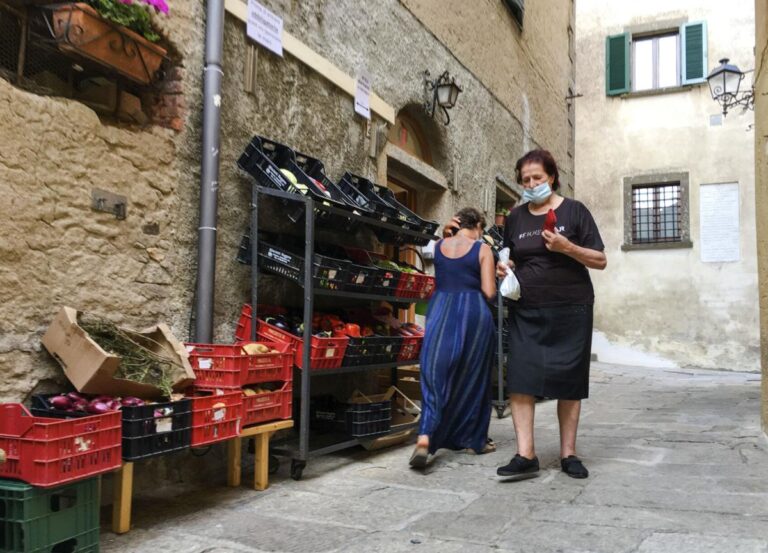
Questions abound as a tiny Italian island has been mostly spared from the devastation of COVID-19.
Were people on Giglio Island perhaps infected but didn’t show symptoms? Was it something genetic? Something else, or just plain luck?
None of Giglio’s roughly 800 close-knit islanders said they developed COVID-19 symptoms, even though the conditions seemed favorable for the disease to spread like wildfire, The Associated Press reported.
The Gigliesi, as the residents are known, have socialized in the steep alleys near the port or on the granite steps serving as narrow streets in the hilltop Castle neighborhood, with densely packed homes built against the remnants of a fortress erected centuries ago to protect against pirates.
Dr. Armando Schiaffino, the island’s sole physician for around 40 years, shared worry about a potential local outbreak.
“Every time an ordinary childhood illness, like scarlet fever, measles or chicken pox strikes, within a very few days practically all get” infected on Giglio, he said in an interview in his office near the port.
Paola Muti, a breast cancer researcher at the University of Milan, where she’s been an epidemiology professor, decided to try to find out why it wasn’t happening this time.
“Dr. Schiaffino came to me and told me, ‘Hey, look, Paola, this is incredible. In this full pandemic, with all the cases that came to the island, nobody is sick.’ So I said to myself: ‘Right, here we can do a study, no? I am here,’” Muti said.
Giglio’s first known COVID-19 case was a man in his 60s who arrived on Feb. 18 — a couple of days before Italy’s first “native case” would be diagnosed in the north. The man came to Giglio for a relative’s funeral, and had been “coughing all the way” through the service, Muti said.
The virus is known to spread through droplets when someone coughs, sneezes or talks. The man headed back to the mainland on the ferry the same day and died three weeks later in a hospital.
On March 5, four days before the national lockdown was declared, three more visitors came from the mainland and would test positive on the island. One of them was a German man from northern Italy, the initial epicenter of Europe’s outbreak. He socialized for several days with longtime friends in Giglio, including in public eateries. After a week, due to a bad cough, he was tested on the island and the result was positive. He self-isolated in a house on Giglio.
There were other known cases, including an islander who had lived in Australia for two years before slipping back onto Giglio in mid-March during lockdown to see his parents. Three days after arriving on Giglio, he developed a mild fever and tested positive, Muti said. He self-isolated at his parents’ home.
No other case has surfaced on Giglio, including since lockdown was lifted in early June, and tourists from throughout Italy have been arriving.
Giglio is part of Tuscany, and its health office quickly sent over kits to test for antibodies to see if others may have had COVID-19. In late April, just before the first lockdown travel restrictions would be eased, the islanders had their blood tested, lining up outside the island’s school and doctor’s office.
Of the 800 or so year-round residents, 723 volunteered to be tested.
“We all wanted to do it, to be tranquil” about any possible infection, but also “to help science,” said Simone Madaro, who had been working at the cemetery while the infected man had gathered with fellow mourners.
The Rev. Lorenzo Pasquotti, the priest who conducted the service for around 50 mourners, and who himself was tested recalled: “After the funeral, there were greetings, hugging and kissing,” as is the custom. Then came the procession to the cemetery, where “there were more hugs and kisses.”
Of the islanders tested, only one was found to have antibodies, an elderly Gigliese man who had sailed on the same ferry to the island with the German visitor, Muti said.
Intrigued about why “the virus didn’t seem to interact” with the island’s native population, Muti hadn’t reached any conclusions by the time she was preparing to leave the island this month. She said she planned to write up her study for eventual publication.
It’s possible, Muti guessed, that islanders weren’t exposed to enough COVID-19 to get infected.
That possibility was also voiced by Massimo Andreoni, head of infectious diseases at Rome’s Tor Vergata hospital. He noted some patients were simply less capable of spreading the disease for reasons that were still unclear.